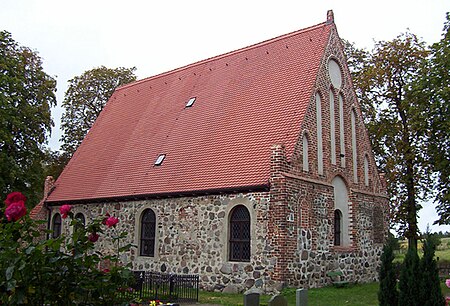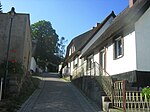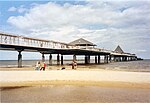Garz (Usedom)
Municipalities in Mecklenburg-Western PomeraniaPages with German IPAVorpommern-GreifswaldVorpommern-Greifswald geography stubs

Garz (German pronunciation: [ˈɡaʁts]) is a small municipality on the island of Usedom in the Vorpommern-Greifswald landkreis in the state of Mecklenburg-Vorpommern, Germany. Adjacent to the town is the regional Heringsdorf Airport, before border controls between Poland and Germany were abolished in 2007 in accordance with the Schengen agreement. A border checkpoint with Świnoujście that was restricted to pedestrian/bicycle/bus traffic existed briefly.
Excerpt from the Wikipedia article Garz (Usedom) (License: CC BY-SA 3.0, Authors, Images).Garz (Usedom)
MTS-Straße, Usedom-Süd
Geographical coordinates (GPS) Address Nearby Places Show on map
Geographical coordinates (GPS)
| Latitude | Longitude |
|---|---|
| N 53.883333333333 ° | E 14.166666666667 ° |
Address
MTS-Straße
MTS-Straße
17419 Usedom-Süd
Mecklenburg-Vorpommern, Germany
Open on Google Maps










